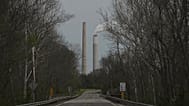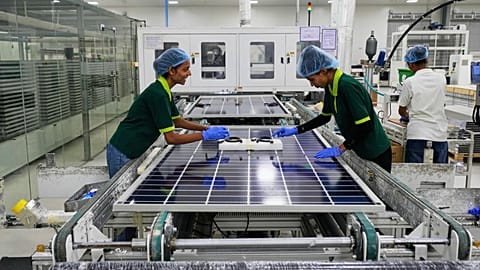New research warns that keeping global warming under 1.5°C is 'no longer plausible'.
Emissions from fossil fuels are set to reach a record high in 2025, according to new research published on Thursday.
It warns that the remaining carbon budget to keep global warming under 1.5°C is now “virtually exhausted”.
The annual Global Carbon Budget Report says that though decarbonisation of energy systems is progressing in many countries, it isn’t enough to offset the growth in global energy demand.
Fossil fuel emissions will be 1.1 per cent higher in 2025 than they were a year ago, according to an international team of more than 130 scientists, as coal, oil and gas emissions are all set to rise.
With no sign of the urgently needed decline in global emissions, its authors say, the level of CO2 in the atmosphere and the dangerous impacts of global warming continue to increase.
The world has ‘virtually exhausted’ its carbon budget
This year marks 10 years since the Paris Agreement and, despite progress on many fronts, fossil fuel emissions continue to rise. The report calculates the remaining amount of carbon that can be emitted to keep global warming below the 1.5°C goal set by the agreement.
“With CO2 emissions still increasing, keeping global warming below 1.5°C is no longer plausible,” said Professor Pierre Friedlingstein, from Exeter’s Global Systems Institute, who led the study.
“The remaining carbon budget for 1.5°C, 170 billion tonnes of carbon dioxide, will be gone before 2030 at current emission rate. We estimate that climate change is now reducing the combined land and ocean (carbon) sinks – a clear signal from Planet Earth that we need to dramatically reduce emissions.”
The Paris Agreement does appear to have had some impact on global emissions. The report found that total CO2 emissions have grown more slowly in the past decade - up by an average of 0.3 per cent per year - compared to the previous decade, where they saw an average increase of 1.9 per cent per year.
Europe’s emissions are set to rise
Emissions in the EU have fallen in previous years. But this year, colder weather, among other factors, has increased energy demand, causing emissions to rise by 0.4 per cent. The same is true for the US, where emissions are projected to grow by 1.9 per cent.
Among other major emitters, the report says China’s emissions have started to plateau, increasing by 0.4 per cent. They are now growing more slowly than in recent years, due to a moderate growth in energy consumption combined with an extraordinary growth in renewable energy.
India’s emissions are projected to increase by 1.4 per cent - also slower than recent trends. An early monsoon reduced cooling requirements in the hottest months, which, combined with strong growth in renewables, led to very low growth in coal consumption. For Japan, projected emissions are down by 2.2 per cent.
“Efforts to tackle climate change are visible, with 35 countries succeeding in reducing their emissions while growing their economies, twice as much as a decade ago, and important progress in reducing reliance on fossil fuels elsewhere,” explains Professor Corinne Le Quéré, Royal Society research professor at the University of East Anglia’s School of Environmental Sciences.
But, Professor Le Quéré says, this progress is still “much too fragile” to translate into the sustained decrease in emissions needed to tackle climate change.
Where are emissions increasing?
Lots of different sources and carbon sinks factor into working out annual global emissions.
Total emissions are calculated by tracking human-caused emissions and comparing them to the amount of CO2 absorbed by land and ocean sinks. Overall, total global CO2 emissions are projected to be slightly lower than last year.
For fossil fuels, the rise is being driven by all fuel types. Emissions from coal are up 0.8 per cent, oil by 1 per cent and natural gas by 1.3 per cent. While emissions from shipping have remained flat, those from international aviation are projected to rise by a staggering 6.8 per cent in 2025.
The projected figure for land-use change, which includes things like deforestation, is down this year to 4.1 billion.
“The reduction in land-use emissions demonstrates the success that environmental policies can achieve. Deforestation rates in the Amazon have declined and are at their lowest level this season since 2014,” says Professor Julia Pongratz, from the Ludwig-Maximilian-University Munich’s Department of Geography.
Emissions from permanent deforestation remain high at around 4 billion tonnes of CO2 per year. Around half of that total has been offset by reforestation, new forests and regrowth.
The combined efforts of climate change and deforestation, however, have now turned Southeast Asian and large parts of South American tropical forests from CO2 sinks into sources. Instead of offsetting the problem, they are now contributing to it.
This year’s report found that 8 per cent of the total rise in atmospheric CO2 concentration since 1960 is down to climate change weakening these vital land and ocean carbon sinks.


















